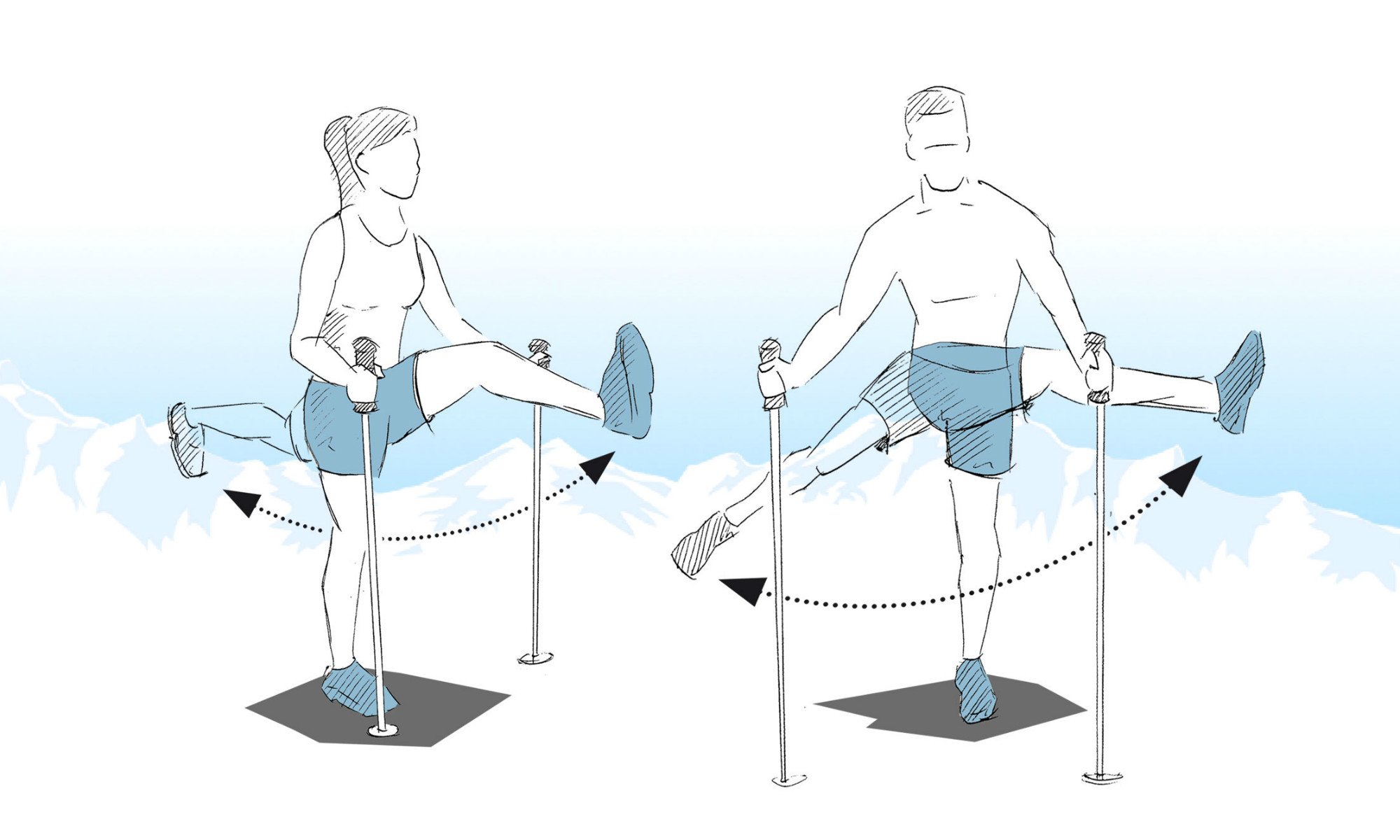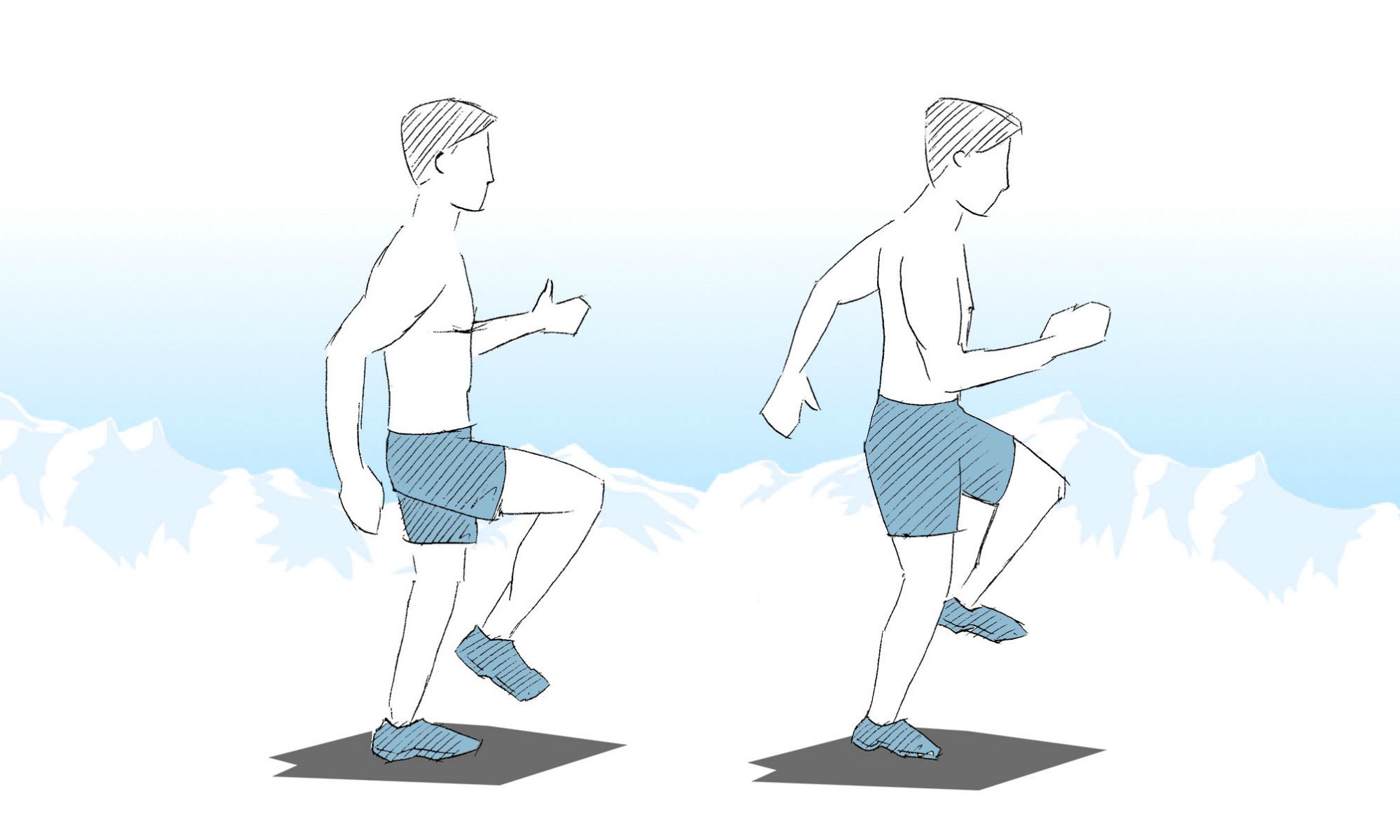Whether you’re a total beginner, an experienced or professional skier, young or old – everyone has to warm up before hitting the slopes!
As tempting as it is to go straight to the ski lift and set off down the slopes, it’s never a good idea to skip a warm-up. Here, the checkyeti team explains the advantages of a quick warm-up session and shares easy yet effective warm-up exercises that you can do directly on the slopes.
-
- Why is a warm-up necessary?
- How does a warm-up benefit the body?
- Exercises on the slopes: Getting ready for a successful day of skiing
Why is a warm-up necessary?
Skiing is a sport that can put a lot of strain on the body, even for those who ski regularly. With the exception of a lunch break, skiers mostly spend the whole day on the resort’s slopes and, unfortunately, many don’t even think about warming up before getting out on their skis. A warm-up is the most important preparatory part of every sport and in the case of skiing, a warm-up helps improve circulation and make the body more flexible on cold winter days.
A quick warm-up prior to your first descent not only activates your circulation and your muscles, it also prepares your body for any upcoming strain. Warming up correctly minimises the risk of injuries and the probability of having sore muscles the next day. Furthermore, a warmed-up body leads to better efficiency and performance, making skiing even more fun. It is very important to activate the muscle groups that are most used for skiing and this can easily be achieved by doing special exercises.
How does a warm-up benefit the body?
Knowing what exactly happens to your body during a warm-up will help you better understand the benefits of such exercises. The warm-up exercises not only increase your body temperature but also your breathing rate and your pulse. These increases then lead to better blood circulation in your muscles. Consequently, oxygen and other nutrients-like minerals and carbohydrates are pumped into the muscles a lot faster.
Another positive effect of warming up is that waste products produced in your body during physical activity are eliminated more effectively. This helps prevent an excess of acids in your muscles; a burning sensation in your thighs for example is an indication of hyperacidity. Furthermore, warming up also helps to prepare your joints for the upcoming strain on the slopes . This helps the body more effectively cushion shocks and prevent the joints from being worn down.
Warming up is not only good for your body, but it also helps to prepare you mentally. Simple warm-up exercises send stimuli to your brain, signalling that physical activity is beginning and that a high level of concentration is required.
checkyeti Tip: checkyeti recommends doing a few warm-up exercises even after your lunch break or other stops in order to have a smoother transition back to the slopes.
Exercises on the slopes: getting ready for a successful day of skiing
Warming up effectively is easy and fast. In this part of the blog, you’ll find a number of exercises that you should do before hitting the slopes. All listed exercises can be done quickly and easily, directly on the slopes and right before skiing. It is recommended to repeat every exercise 5 to 10 times.
Swing your body – Arm circles and leg swings
Doing arm circles and swinging your legs are the “mobilising” warm-up exercises of skiing. These exercises are especially great for loosening up your shoulder and hip joints. To warm up your arms, stand straight, with your feet shoulder-width apart. Start circling your arms, first forwards and then backwards. Try doing at least 10 full circles for each direction. Whether you want to circle both arms or each arm individually is up to you.
If you want to work on your coordination, you can also try circling your arms in opposite directions: While circling one arm forwards, circle the other one backwards, alternating the arms. This exercise is quite useful if your fingers are cold as it stimulates the blood circulation in the whole arm.
You can activate your leg muscles by swinging them back and forth. Use your ski poles if necessary, to help keep your balance.

checkyeti Tip: You can intensify the leg swings by swinging your legs sideways, from left to right. The weight of your ski boots will make this even more effective!
The strength lies in the centre – Hip circles/torso rotations
Activating the torso is just as important as warming up your arms and legs as your core gives you stability during skiing. Start this exercise by standing straight with your legs at shoulder width, your hands on your hips. Make circles with your hips. Big circles are most effective for this exercise and always circle in both directions, clockwise and counterclockwise.
A similar exercise also exists for the torso. Simply take your skiing poles and place them on your shoulders, behind your head. Hold on to the poles and then turn your torso as far as you can, to the right and the left.

checkyeti Tip: If you don’t have skiing poles, simply stretch your arms out sideways and bend forwards. Then rotate your torso so that your right hand touches your left foot. Afterwards, repeat the exercise, touching your right foot with your left hand.
The classic – Squats
As your legs bear a lot of strain during skiing, warming up your leg muscles beforehand is crucial. Squats are a true classic when it comes to leg warm-up exercises. Start this exercise by standing straight with your feet shoulder-width apart. Lower your body as far as you can into a squat position. The number of squats you should do depends on your physical condition. However, a minimum of 10 squats is recommended. Make sure that your knees do not bend over your toes. By doing full squats, you can efficiently activate your thigh muscles.
Squat variations: Hold the squatting position for 20 seconds or swing back & forth. Another variant is to imitate the movements made when making turns on the slope.
Let’s go – Walking on the spot

Marching on the spot helps warm up your lower body. For this exercise, march on the spot for for 20 to 30 seconds. Make sure you lift your knees high enough; ideally, your thighs should be parallel to the ground. You can intensify this exercise by doing it whilst wearing your skis or by increasing the speed. Skiing poles can, of course, be used for better stability. Make sure that your upper body is always straight during this exercise.
Jumping jacks

Jumping jacks are the perfect exercise to accelerate your heart rate. Start this exercise by standing straight with your legs closed and your arms by your sides. Jump and land with your feet wide apart (wider than shoulder-width) and your arms over your head. Then jump back to the starting position with your arms lowered.
checkyeti Tip: It’s often difficult to motivate kids to do a warm up. That’s why you should always try to add a bit of fun to the exercises. Fun games such as playing tag, having a snowball fight or racing or chasing each other can easily get even the youngest kids to move and warm up their bodies.
As someone who loves going on adventures, I simply love to share my know-how and insight on our outdoor sports offers and tell you everything I’d want to know about all these beautiful places and exciting activities. Whether you’re looking for inspiration or tips on rafting, canyoning, paragliding or any other activity, I’m always happy to tell you all about it!
